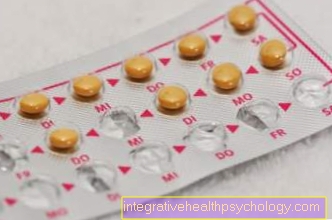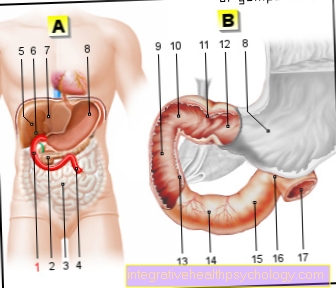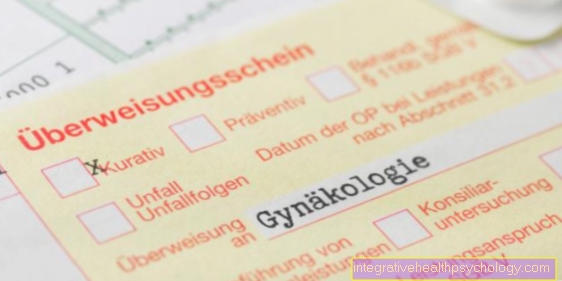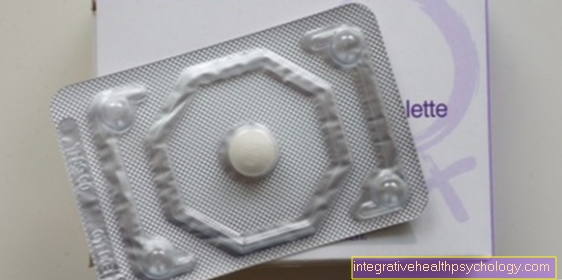Glucose Tolerance Test - What Is It For?
Synonyms
Sugar exposure test
oGGT (oral glucose tolerance test)
What is the Glucose Tolerance Test?
The glucose tolerance test is also called the sugar stress test.
In this test, a certain amount of glucose (sugar) is absorbed into the body through a drink. Then it is determined to what extent the body can independently lower blood sugar to normal values again.
In this way, disturbances in the utilization of blood sugar (glucose utilization) can be recognized.
The test is therefore carried out primarily in the early diagnosis of diabetes as well as screening during pregnancy.
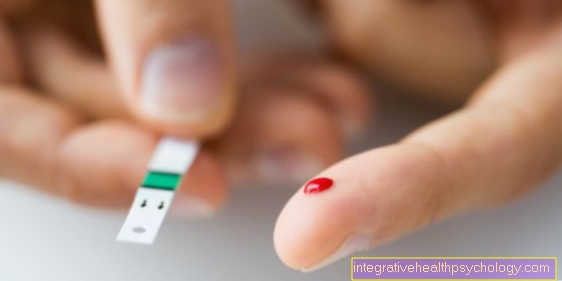
When is the glucose tolerance test done?
The German Diabetes Society (DDG) recommends carrying out the glucose tolerance test as a screening method if certain risk factors are present.
These risk factors suggest that the blood sugar utilization could be impaired. They are listed below:
-
Overweight (BMI> 27 kg / m²) and lack of exercise
-
High blood pressure (≥ 140/90 mmHg)
-
increased fat levels in the blood
-
abnormal fasting blood sugar level (100 to 125 mg / dl)
-
Abnormal urine findings with the appearance of proteins (albuminuria)
-
Diabetes mellitus 2 in a first-degree relative
- During pregnancy to rule out gestational diabetes (pregnancy-associated diabetes):
With increased fasting blood sugar values, with gestational diabetes in the past, with the birth of a child weighing> 4 kg
When should the glucose tolerance test not be carried out?
The test should not be performed if:
-
known diabetes mellitus
-
fever
-
cold
-
Inflammation of the liver such as hepatitis
-
Abnormal urine result: ketone bodies in the urine (ketonuria)
-
Abnormal blood: acidification of the blood, reduced pH
Prepare for the glucose tolerance test
The glucose tolerance test is usually done in the morning. It is important that you appear sober for the test.
On the one hand, this means that you should avoid nicotine, alcohol, coffee and tea twelve hours before the start of the test. On the other hand, it means that you should not eat anything about ten hours beforehand and not drink anything other than water.
In order to have reliable results, the German Diabetes Society recommends that you maintain your eating behavior as always at least three days before the start of the test, i.e. not to change it: Do not follow any diets in order to positively influence the test result. This only falsifies the test result! At best, consume more than 150g of carbohydrates a day.
Course of the glucose tolerance test
First, blood will be taken from your vein, fingertip or earlobe to determine your fasting blood sugar level.
Then you will be given a sweet liquid that you need to drink in less than 5 minutes. This liquid contains 75 g of glucose in 250 to 300 ml of water.
After two hours, your blood will be drawn again and your blood sugar level determined.
You might also be interested in: This is how blood sugar is measured
Evaluation and standard values
When evaluating the glucose tolerance test, your own blood sugar value after two hours is compared with the normal values after two hours.
If your own blood sugar level is too high, it indicates that the body could not use the blood sugar (glucose) sufficiently or that glucose was not absorbed sufficiently into the cells.
One reason for this can be a disturbed insulin metabolism - as in diabetes mellitus. Insulin is responsible for lowering blood sugar and absorbing blood sugar into cells. The standard values are listed below:
Fasting blood sugar:
- Healthy: <100 mg / dl (<5.6 mmol / l)
- Impaired blood sugar metabolism: 100 - 125 mg / dl (5.6 to 6.9 mmol / l)
- Diabetes mellitus: From> 125 mg / dl (> 6.9 mmol / l)
Blood sugar after 120 minutes:
- Healthy: <140 mg / dl (<7.8 mmol / l)
- Impaired blood sugar metabolism: 140 to 199 mg / dl (7.8 to 11 mmol / l)
- Diabetes mellitus:> 199 mg / dl (> 11 mmol / l)
The main aim of the glucose tolerance test is to check for a blood sugar utilization disorder in the sense of diabetes. Elevated blood sugar levels indicate sugar disorder. But what is diabetes and how do you recognize it? Read more about this at: Diabetes Mellitus - You Must Know That!
Glucose tolerance test in pregnancy
All pregnant women in the 24th to 28th week of pregnancy are offered a screening method for gestational diabetes as part of prenatal care. This screening includes the following tests:
1. Pre-test (glucose challenge test):
You don't have to be sober to take this test. So you can eat and drink beforehand. As part of the test, you will be given a liquid with 50 g of glucose (glucose) in 200 ml of water to drink. After about an hour, your blood sugar level will be determined by taking blood from your earlobe, fingertip or vein.
If the pre-test is abnormal or if your blood sugar value exceeds ≥ 135 mg / dl (7.5 mmol / l) after one hour, the glucose tolerance test follows.
2. Glucose tolerance test (75 g oGGT)
This test has already been described above:
You must appear sober for the test, i.e. you must not eat anything or drink anything except water for at least ten hours beforehand.
Your fasting blood sugar will then be determined by drawing blood from your vein or fingertip. Then drink a liquid with 75 g of glucose in 300 ml of water. After one and two hours, the blood sugar level is determined by taking another blood sample.
If the blood sugar level is ≥ 153 mg / dl (8.5 mmol / l) after two hours, gestational diabetes is probably present. This requires further action.
Gestational diabetes can be dangerous for you and your child. Find out more at: Diabetes During Pregnancy - What You Should Know!
You might also be interested in: Medical check-ups during pregnancy, glucose tolerance tests during pregnancy
Duration of the glucose tolerance test
The glucose tolerance test takes about 130 minutes to complete.
Because after you have drunk the glucose liquid, exactly two hours (120 minutes) have to be observed until the blood sugar level is again determined by a blood sample from the vein or fingertip.
This is the only way to make a comparison with the normal values, so that a reliable test result is available and impaired glucose utilization can be recognized.
Are there any side effects?
If you are eligible for the glucose tolerance test, i.e. if you have no counter-signs, no major side effects are to be expected.
However, nausea and vomiting can occur because the sugar solution is very sweet and can taste unpleasant.
Glucose Tolerance Test Cost
If there is no medical justification for performing the glucose tolerance test, the costs can be up to 20 euros. Otherwise, the costs are usually covered by the health insurance company.
Since 2012, pregnant women have not paid for the test as part of their prenatal check-ups if they have previously performed the pre-test (50 g glucose test). The pre-test gives the first indication of whether gestational diabetes is present. The health insurance company will only cover the costs of the subsequent glucose tolerance test (75 g glucose test) if the pre-test is suspicious.
Many doctors recommend that pregnant women do the glucose tolerance test directly. However, this is actually not medically justified, but creates costs for the patient.
Can you do the glucose tolerance test yourself?
There are already attempts to introduce the glucose tolerance test for home use.
However, because the test is complex and there can be many errors in performing it, a visit to a doctor is required. The family doctor or gynecologist will often do the glucose tolerance test.
What are alternatives to the glucose tolerance test?
Alternatives to the glucose tolerance test are:
- Determination of the fasting blood sugar
Blood sugar is determined in the fasted state. A few drops of blood are enough. The blood sugar should be below 100 mg / dl. Blood sugar levels from 126 mg / dl indicate diabetes mellitus. - Determination of long-term blood sugar (HbA1c)
This value is also known as the HbA1c value. This can be used to determine the blood sugar level for the last three months. This requires a blood draw from the vein. If the HbA1c value is above 6.5%, diabetes mellitus is very likely.
Further information is available from: HbA1c - the blood sugar memory
Read more about this topic under: Blood sugar measurement

